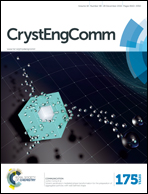Advances of solution chemistry in stabilizing different crystal phases of inorganic nano-compounds
Abstract
Control of crystal structures is essential to tailor the properties of inorganic polymorphic materials for specific applications. For conventional solid transformations, re-arrangement of structural units is usually done at high temperatures and/or pressures (Dalton Trans., 2012, 41, 11927–11948). Such a case could become relatively mild when using solution chemistries, as there is unique reaction medium that allows for formation or transformation to the desired crystal phase through atomic-level cation–anionic interaction, providing potential opportunities for crystal structure control. In this paper, research progress of solution chemistry is highlighted in crystal phase-controlled synthesis of inorganic nano-compounds such as simple metal oxides, chalcogenides, halides, oxysalts etc. After briefly introducing crystal phase diversity and phase-dependent properties of inorganic nano-compounds, the discussion focuses on the critical driven items in the solution reactions such as precursor, pH value, solvents, ions, and water, as well as kinetic factors. Eventually, based on the current research status of the crystal phase-controlled synthesis of inorganic nano-compounds, some perspectives are provided on the challenges and opportunities in this emerging research field.


 Please wait while we load your content...
Please wait while we load your content...